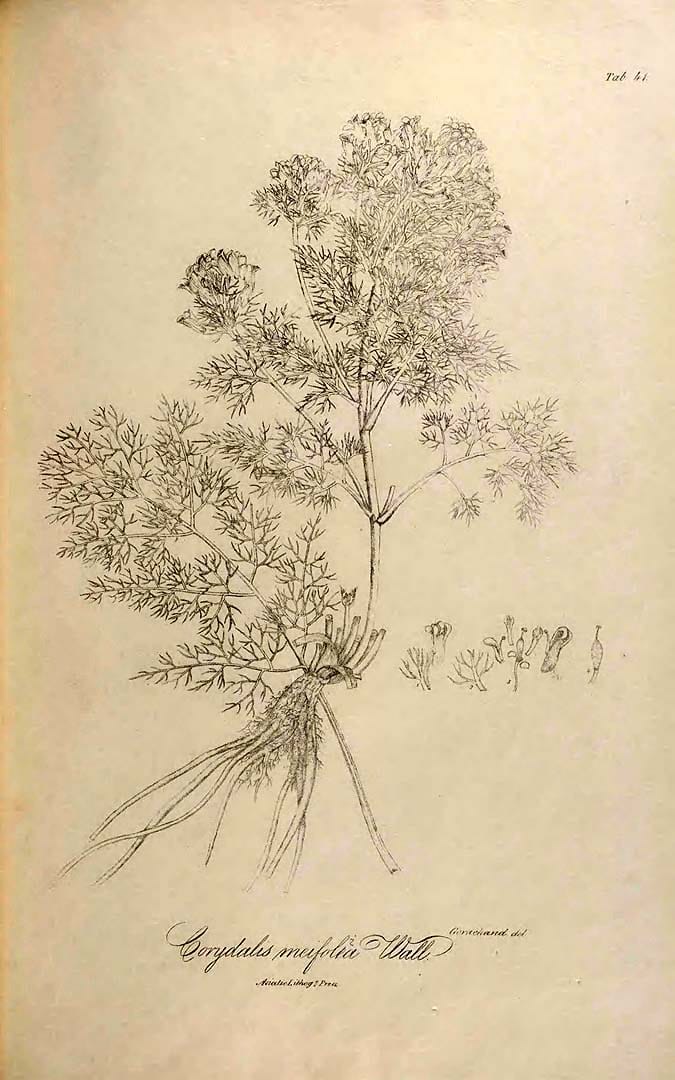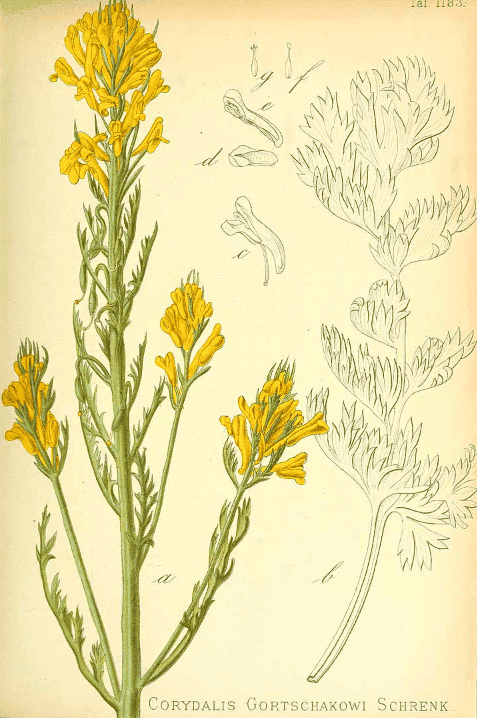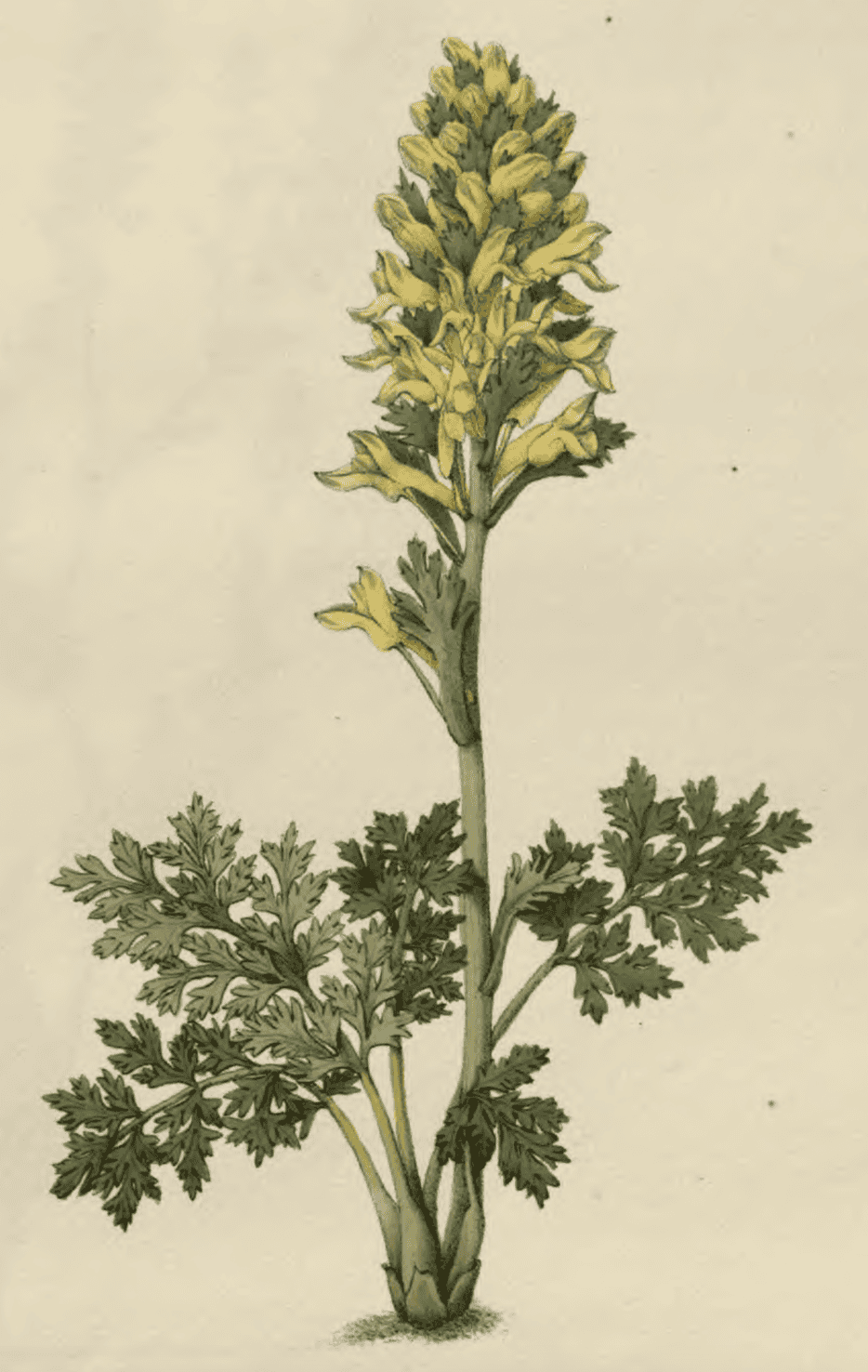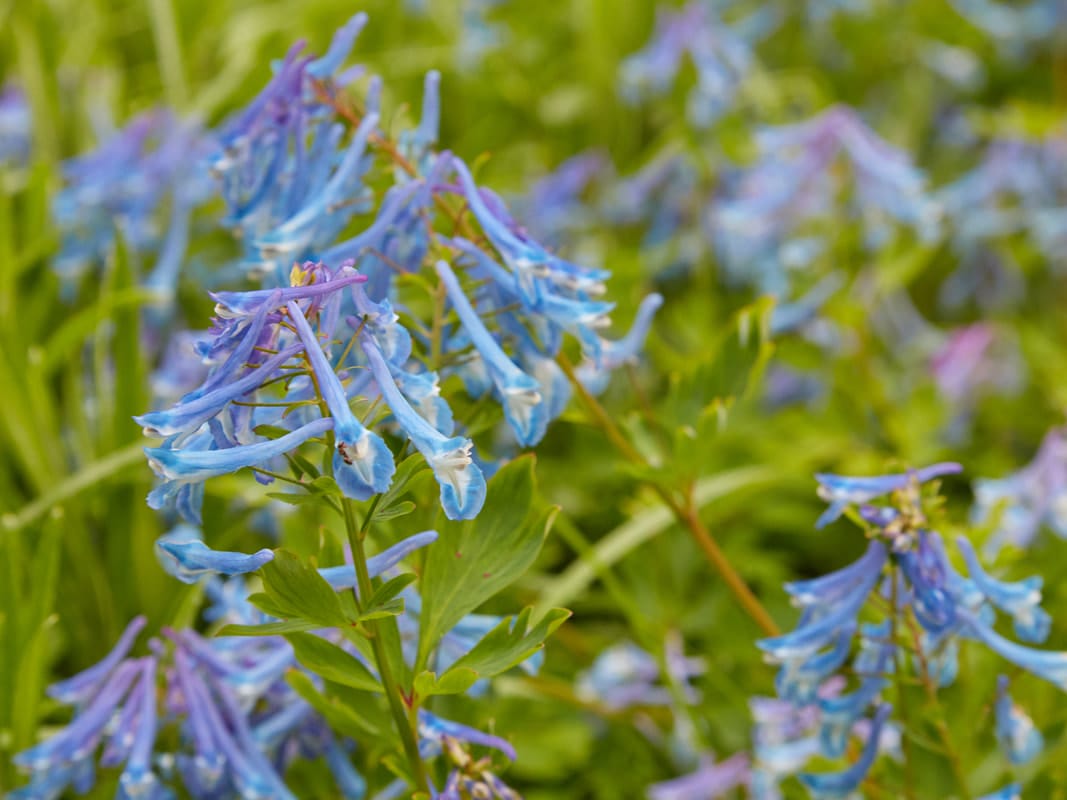Corydalis meifolia, Stong zil སྟོང་ཟིལ
Stong zil (Tibet) Corydalis meifolia
Corydalis meifoliaWallich, N., Tentamen florae Napalensis illustratae (1826)
 Corydalis gortschakovii
Corydalis gortschakoviiGartenflora [E. von Regel] (1885) |
 Corydalis govaniana
Corydalis govanianaIllustrations of the Botany … of the Himalayan Mountains, Royle, 1839 |
 Corydalis cashmeriana
Corydalis cashmeriana(Photo by DoF CC-BY-X) (Wikimedia)
Botanical name:
Corydalis spp.
Blue and Yellow-flowered varieties are mentioned in texts, the Blue regarded as superior although Kletter mentions C. meifolia being the species collected in Northern India.
- Yellow-flowered (Inferior): C. meifolia, C. boweri, C. dubia, C. hamata, C. megacalyx
- Blue-flowered (Superior): C. trachycarpa, C. binderae, C. cashmeriana
Parts used:
Aerial parts of the herb; occasionally the Root
Temperature & Taste:
Cool, dry. Bitter
Uses:
1. Clears Wind-Heat, Resists Toxin:
-Cold, Fever, Infections; ‘Hidden Fever’
-Skin diseases; Syphilis (root)
-pain of the muscles
2. Clears Liver Heat, Benefits the Eyes:
-Abdominal pain; Cholecystitis
-Headache
-eye pain, redness, soreness
-Lymphatic congestion, Scrofula
-fresh root juice is applied to clear and improve eyesight
3. Clears Wind-Damp:
-Rheumatism
-swelling of the Feet
4. Clears Heat, Stops Cough
-Cough, Whooping Cough, Bronchitis
-Asthma, respiratory disorders
5. Externally:
-applied to swellings and burns
Dose:
Powder: 1–3 grams
Substitutes:
Celandine (Chelidonium majus) is used in Buryat.Main Combinations:
1. Skin diseases, Abscesses, Itching, Elephantiasis, Corydalis meifolia Stong zil with Triphala, Costus, Frankincense, Psoralea (Bu Gu Zhi), Cassia tora seed, Shilajit (as in Codonopsis 18 of Tibetan Medicine)
Major Formulas:
Codonopsis 18 (Tibetan Medicine)
Cantharide 37 (Tibetan Meidicine)
Cautions:
None noted
